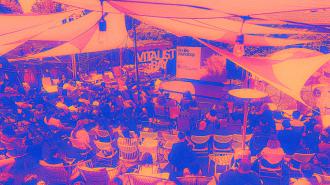Humans will build a community around seemingly anything. Life, liberty, and the pursuit of happiness. No god but our God. Fan fiction and cosplay. Racial justice, gender rights, and pride movements of all colors. There are communities of rationalists and Buddhists and birdwatchers. Flat Earth Society members and QAnon conspiracists. Nevada’s annual Burning Man festival somehow manages to combine all the above.
No matter the motive, bonding is hardwired into our biology. When we form and fortify new relations, our cells release the “love hormone” oxytocin, which makes us feel cherished and rooted. We evolved this particular pleasure button because members of our species tend to do better in groups than as individuals. Millennia ago, being part of one meant you were less likely to be eaten by wolves or die of starvation. Today, maintaining social connection reduces the risks of both heart disease and dementia by about 30%, according to two recent studies.
We may contrive celestial stories to justify the existence of our communities, but the common threads that bind us are almost always secondary to a more simple and primordial drive to be in each other’s presence. Yet as our communities grow in both diversity and number and our capacity to choose our own tribes expands ad infinitum, the places where we find belonging come to serve as statements about who we are, what we care about, and how we wish to spend our time on Earth.
Our associations of choice are also expressions of the world in which we hope to live, and our strongest associations can become shortcuts to making that world a genuine reality. Along those lines, for two months on a small campus near the eastern lip of the San Francisco Bay, a community formed around the dream of a very special kind of world: one in which we never grow old and die.
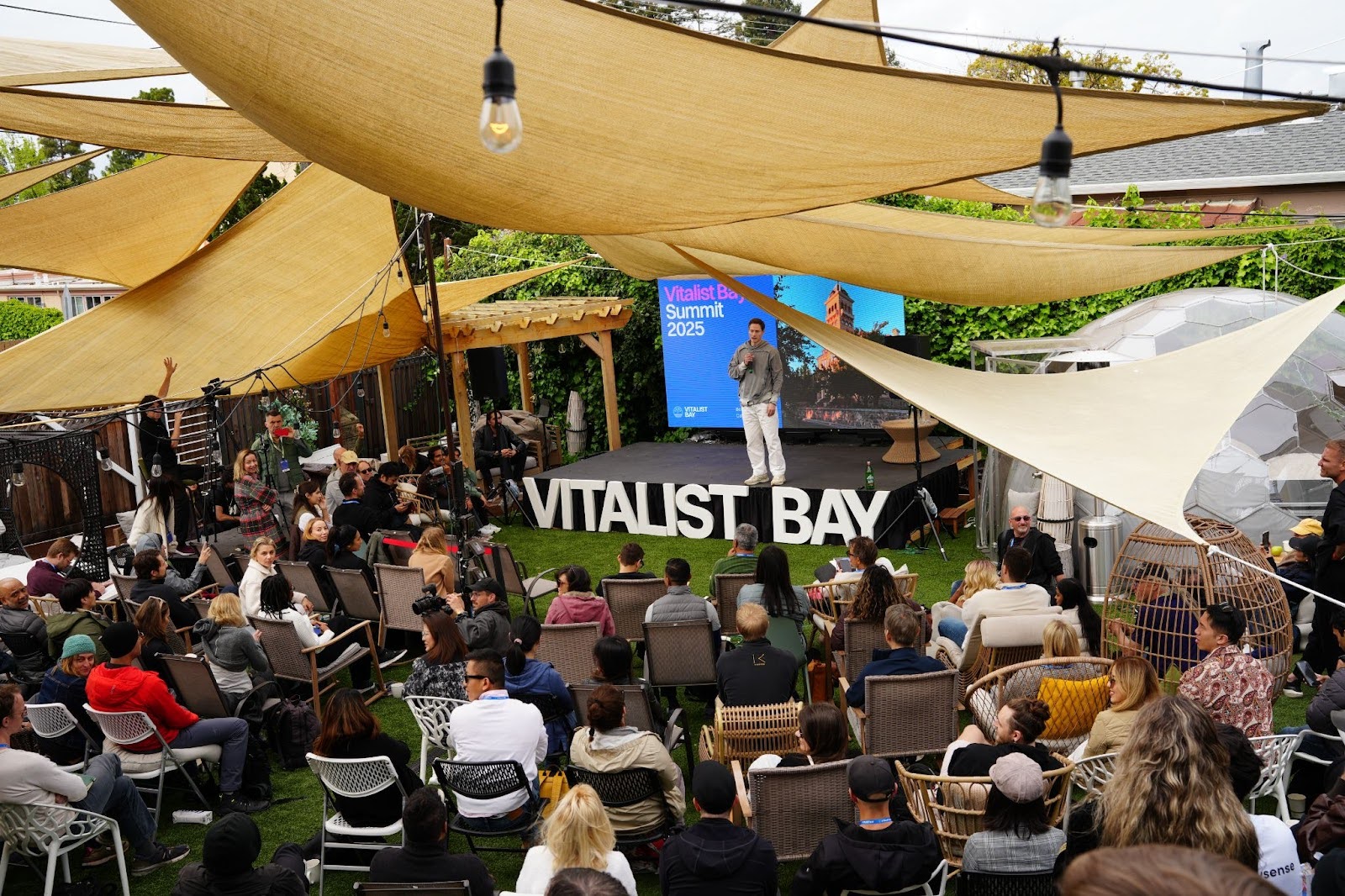
Part conference, part commune, part concert venue
Vitalist Bay was many things at once. According to its organizers, it was “longevity’s new capital,” while a pin on Google Maps dubbed it “a wellness program in Berkeley, California.” To some, it was a group home, an academic conference, a pop-up community, and a special research zone all in one. For the immortality-hungry zealots of the world, Vitalist Bay was a safe place to congregate and hunt for ways to commit their talents, bodies, and bank accounts to the prevention of their own biological deaths. For me, Vitalist Bay was a crash course on a discipline I had relegated to the realm of science fiction: the study of radical life extension. It was also a community unlike any I had ever seen.
During the eight-week event, which began this spring, organizers transformed a block-wide private campus in Berkeley into what they billed as a “longevity zone bringing the world’s best minds together to extend human healthspan and solve aging.” Among the 200-plus people scheduled to speak at various points during the event were biotech CEOs, science communicators, venture capitalists, researchers, and activists — each with something to say about how we might live better, longer, and just maybe, forever. “We’re running the biggest, most ambitious longevity event in history,” Adam Gries, one of the two founders and lead organizers of Vitalist Bay, told me.
Each of Vitalist Bay’s eight weeks centered around a theme, starting with how to optimize human health with the latest advancements in scientific research. If you stuck around for the following week, though, you’d find yourself a bit further afield, dabbling in what organizers described as “cutting-edge innovations that may not yet be in the clinic but are shaping the future of lifespan extension.” By the seventh week, the summit circled around newfangled technologies, like cell replacement, cryopreservation, and mind uploading. And on the final afternoon of Vitalist Bay, the closing remarks concerned “how to maximize the value of your infinite life.”
As the conference slowly stepped into the realm of sci-fi, the speakers remained mostly well credentialed and the talks grounded predominantly in science. But the grandiose branding, combined with Vitalist Bay’s unique emphasis on community, made it clear that this was more Burning Man than beige-carpeted symposium — part conference, part commune, part concert venue. “When you enter our venue, it’s like you’re walking through somebody’s living room,” said Gries. “We want this to be a place where everybody can truly connect.”
That connection could be purchased via a visitor lanyard for approximately $300 a week or a bedroom starting at $1,850 for the month.
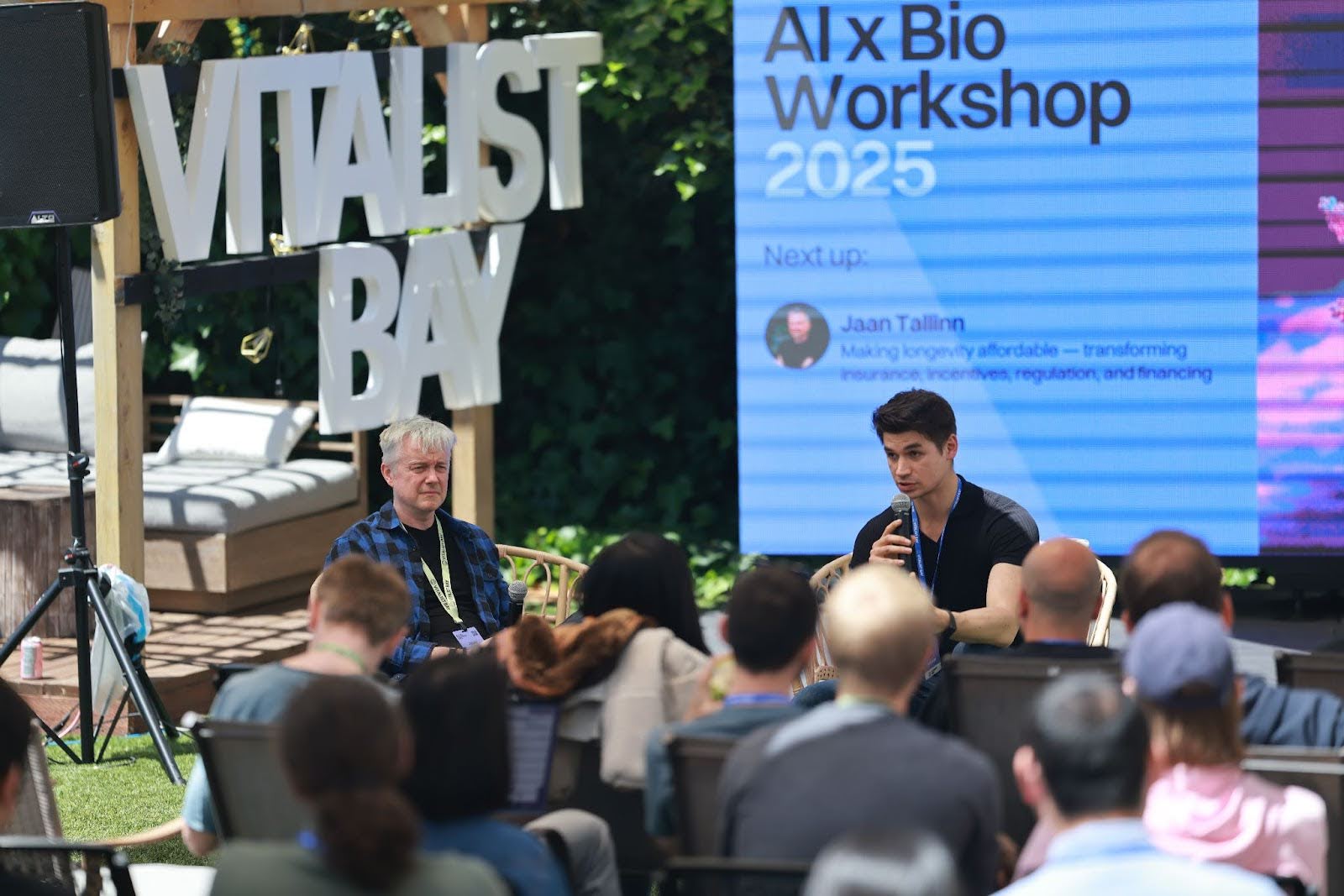
“AI might kill your gains“
I arrived at Vitalist Bay nearly a month into the conference, and my first morning was full of spectacle. A strike of a gong announced the start of each new speaker session, the noise beckoning the dispersed coffee-drinking crowd to gather back toward the canopied main stage. Weightlifting classes, breathing exercises, and Pilates workouts filled the gaps between academic lectures with titles like “How to have a superbaby” and “Would immortality be boring?”
In a turf-grassed corner of the campus’s rear garden, residents lined up at a mobile sauna and cold plunge station. Those curious to quantify themselves could have their bone density measured with a dual-energy x-ray absorptiometry scan. In the central courtyard, a circle of representatives from affiliated companies hawked discounted biometric services, including genetic sequencing and blood glucose sampling. And everywhere I looked, there were piles of purchasable merch, from water bottles to sticker packs, promoting the crusade of longer living.
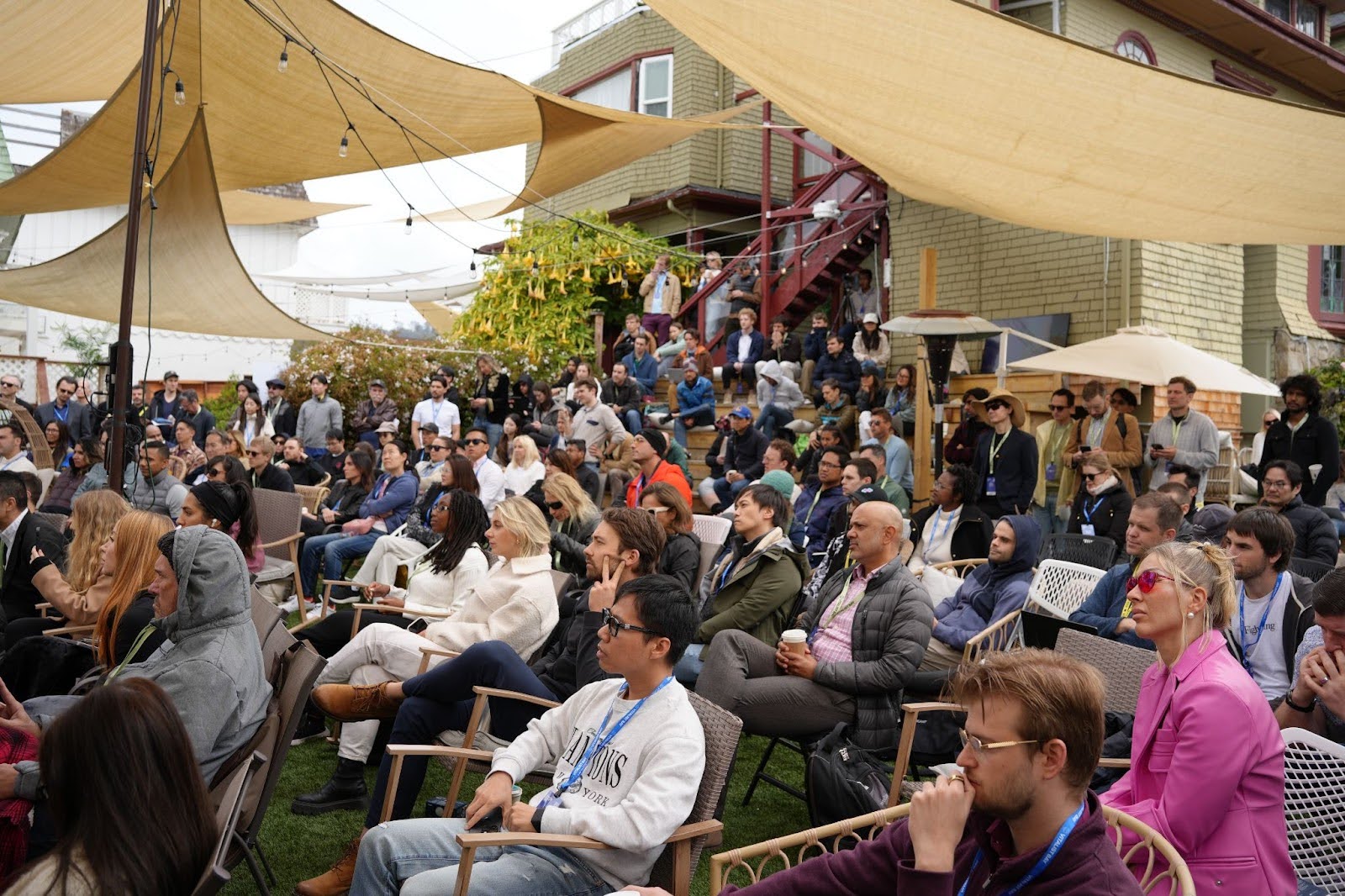
Lighthaven, the setting for the conference, is a cozy five-building, 50-bedroom venue owned and operated by Lightcone Infrastructure, which builds online communities, tech, and infrastructure that increase humanity’s odds of surviving the 21st century. The company is steeped in effective altruism — a philosophical movement centered on using reason and evidence to determine how to do the most good for the most people.
Evidence of these philosophical ties was scattered throughout the campus. Copies of Toby Ord’s “The Precipice” and William MacAskill’s “What We Owe the Future” littered shelves, coffee tables, and occasionally floors. Both popularized ideas about the existential risks facing future generations and the importance of considering them, an idea known as longtermism. Next to the barbell rack in the spartan community gym hung a sign that read “Unaligned AI might kill your gains.” The campus’s Wi-Fi password was “WeAreTheLight,” a nod to the effective altruist belief that the movement’s members are the guardians of humanity’s well-being.
“Aging is either inevitable or not inevitable. If it’s not inevitable, society has an obligation to solve it.”
Jason, a Vitalist Bay attendee
As I walked around the crannied campus and eavesdropped on random conversations, I found that many attendees had a habit of framing the problems of aging and death purely in terms of rational utilitarian ethics, the moral framework employed by most effective altruists. One evening, after the conference crowds had gone home and the campus was left populated only by those occupying its 50 furnished bedrooms, I sat in the kitchen with a group of residents frying a few steaks.
Eventually, I struck up a conversation with a young man named Jason, who like many people I interviewed, asked that I only use his first name. He left a comfortable job in finance to work as an analyst for a blockchain-based longevity venture fund. More recently, he started his own longevity consulting company. I asked him what had brought him to the conference, and he explained that he was looking for more ways he could contribute to what he called “the war against aging.” On a more personal level, Jason dove into the longevity movement after watching his grandparents endure hardships through their old age. The experience led him to see age-related suffering as a moral issue.
“Aging is either inevitable or not inevitable,” he said. “If it’s not inevitable, society has an obligation to solve it.”
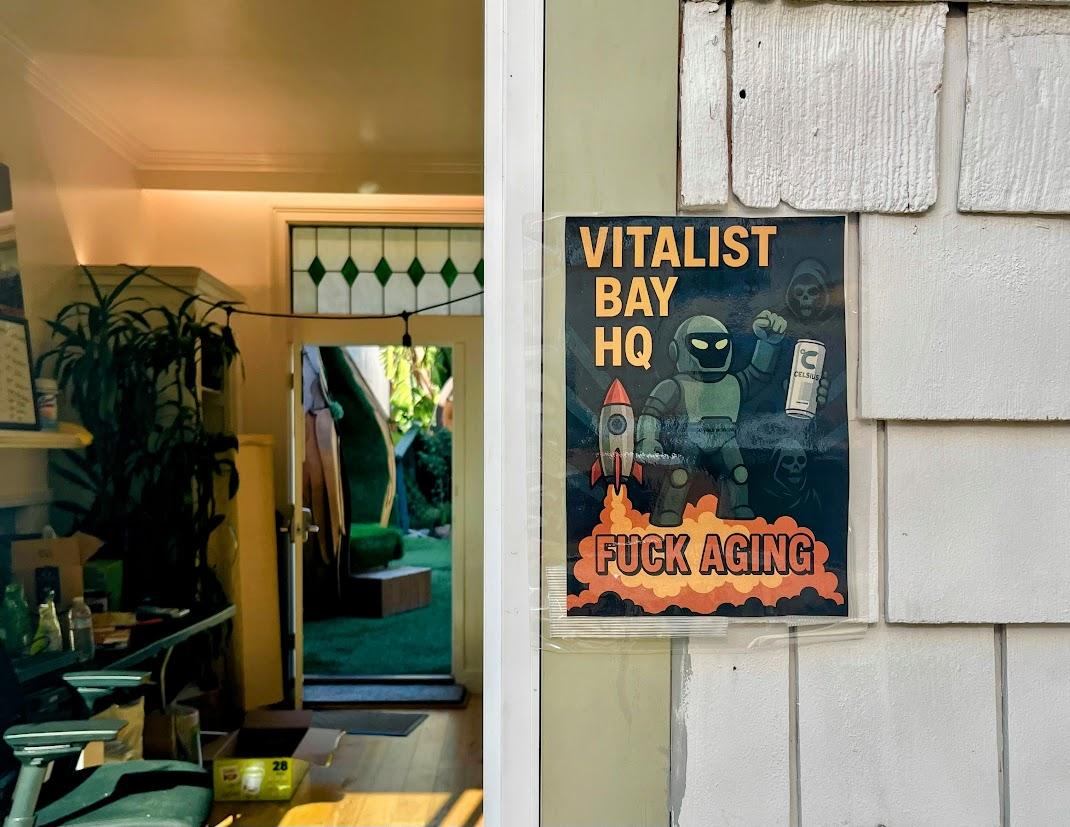
Forever young (and full of supplements)
For most Vitalist Bay attendees, however, aging was far from just an intellectual abstraction — the summit’s citizens were serious about healthy living. The kitchen was stocked with fruits, veggies, eggs, and oat milk. There was hardly a cupcake in sight. Multiple times, I was shocked to learn that residents who looked to be in their late 20s were actually in their 40s.
The kitchen also held a sizable community shelf devoted entirely to vitamins and supplements, many with lexically well-endowed names I had never encountered before. Feeling some pressure to fit in — and perhaps suddenly concerned with maintaining my own 20-something looks — I gradually popped a growing number of capsules over the course of my stay. A few days into that routine, I couldn’t help but feel my skeletal system was carrying a bit more muscle than usual. Placebo effect or not, I bought a sizable number of those same pills as soon as I returned home.
In the main courtyard outside, a giant whiteboard displayed the results of the conference’s “Longevity Olympics,” in which two dozen attendees competed in a handful of gym-class exercises, including planks, pull-ups, and one-legged stands. While undoubtedly a self-selected sample, most every contender’s results ranged from pretty good to outright impressive.
I managed to track down the winner of the contest, a well-built, cherub-faced French 25-year-old named Sacha. He was in the middle of his first-ever trip to the United States so he could attend Vitalist Bay. He wanted to gather ideas for the health and longevity startup he plans to create in the near future. Vitalist Bay, he said, was the obvious place to start. Sacha had rented out a campus bedroom for the entire two-month run of the summit to soak up as much longevity science as he could.
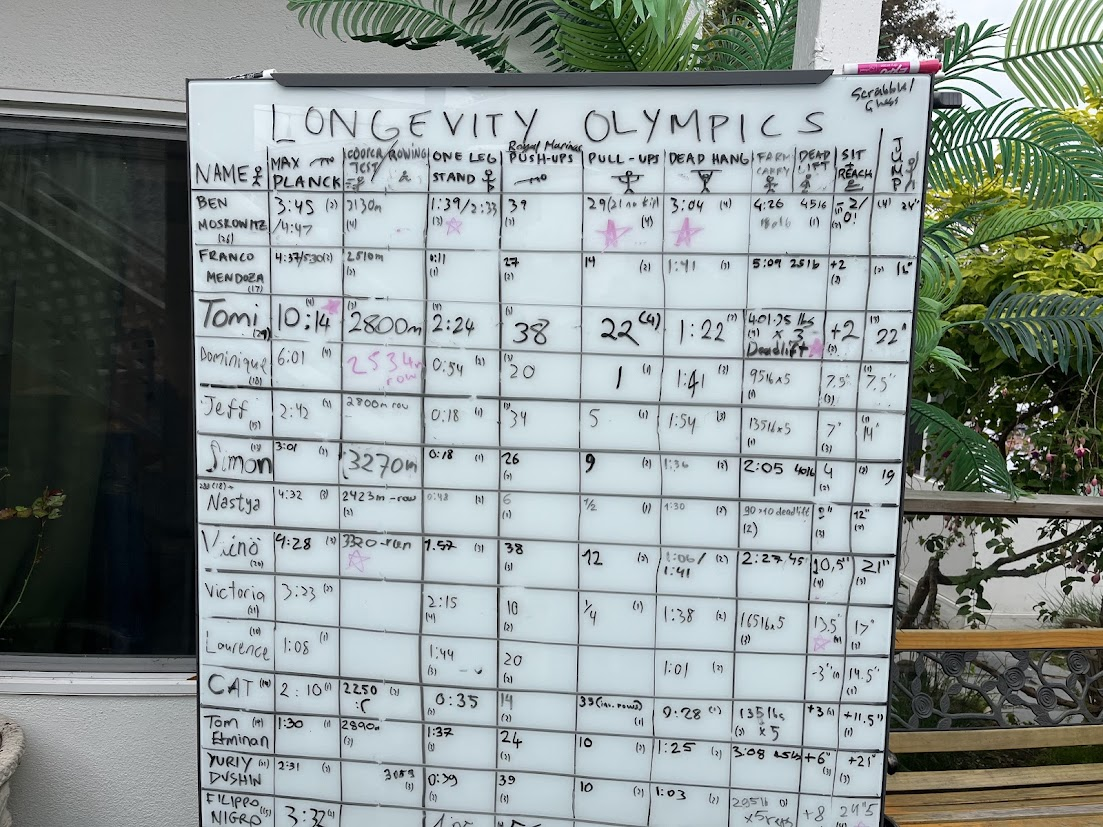
I ran into Sacha at the campus gym multiple times, unsurprising given the circumference of his arms, which I imagine requires constant maintenance. Sacha explained that his large frame and impressive athleticism had emerged during his bygone days as a teenage competitive swimmer. It was that background that had put him on the path to longevity. “I’ve always seen my body as something that is malleable,” he said. “Something that can be changed.”
After overcoming misdiagnosed health issues in his early 20s, Sacha fell into the world of anti-aging research toward the end of 2024 when he stumbled upon another pop-up longevity community in Berlin. There, he met a network of curious young people with worldviews similar to his own. It was those friends who had encouraged Sacha to make the pilgrimage to Vitalist Bay.
I asked him what made so many young people interested in something as out-there as longevity science? “You have to have the right combination of extreme open-mindedness and extreme rationality,” he told me. “We also tend to be more optimistic than the average population. We are aware of all the bad things in the world, but we are also convinced that we can act on it.” For Sacha, Vitalist Bay was a physical embodiment of that ethos. “This place carries optimism,” he said. “It’s a very bright place, in a lot of ways.”
Immortal technique
In keeping with the “forever young” theme of the conference, even the academic portions of the summit maintained a youthful vigor. Halfway through my second day at Vitalist Bay, in between scholarly lectures on bioelectricity and synthetic consciousness, the executive of a neuroscience research nonprofit hopped on stage to perform a five-minute hip-hop number about basic molecular biology:
F*ck anaerobic fermentation
It’s all about cellular respiration
These radicals causing oxidation
Stressing these cells to degradation…
While the attendee demographics skewed somewhat young, male, and impressionable, several veterans of the longevity movement were also notably present. I ran into biogerontologist Aubrey de Grey a few times throughout the conference. After millionaire biohacking influencer Bryan Johnson, de Grey was perhaps the closest thing to a real-life celebrity at the summit, having been among the earliest academics to popularize the idea of what he calls “radical life extension.”
For de Grey, public-facing events like Vitalist Bay have always been a necessary ingredient of that progress. “I believe community building is absolutely vital. The more people get into this, the faster we can get things done,” he told me. “It’s extraordinary how difficult it is to introduce people to the idea of radical life extension.”
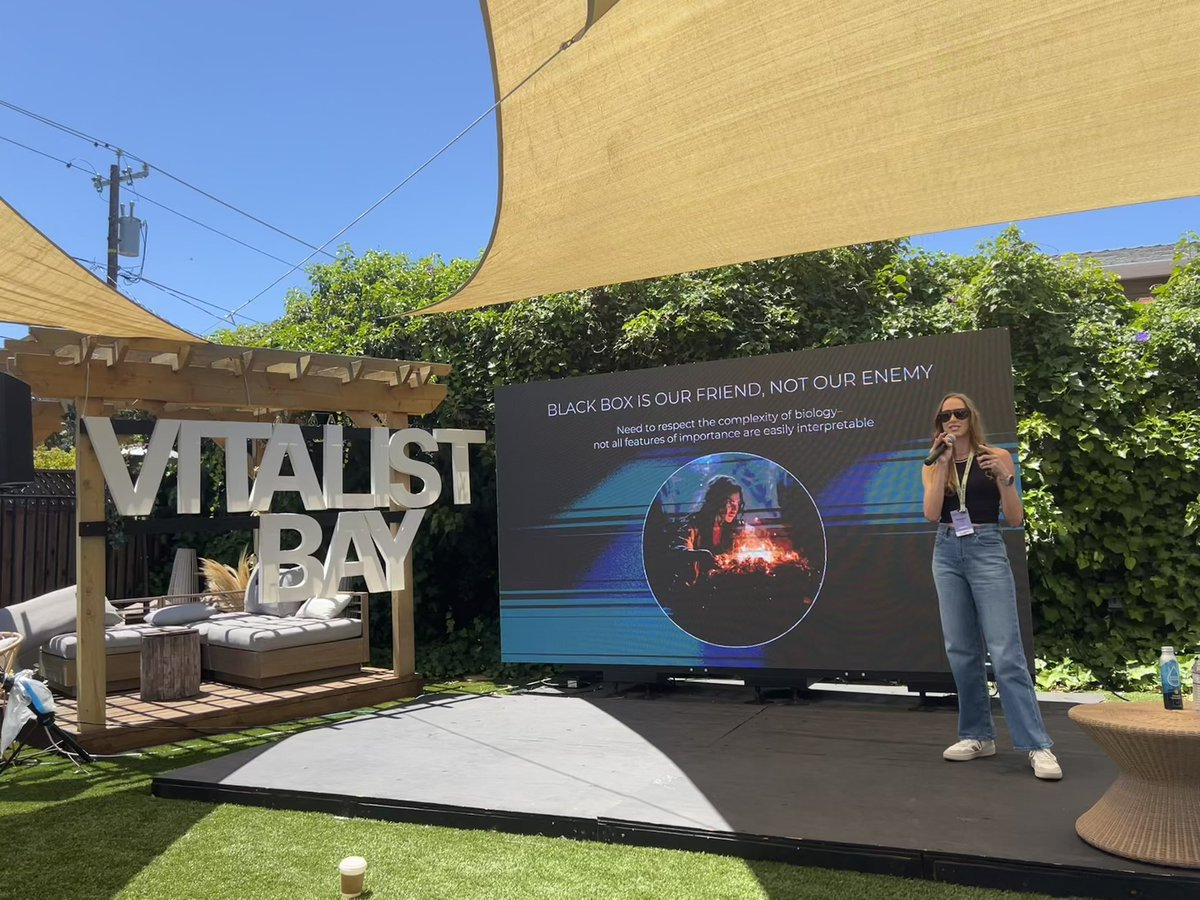
Given that he’d been involved in nearly every major longevity-oriented conference of the last two decades, I thought de Grey might have some insights into what kinds of people were particularly amenable to the concept of radical life extension and therefore more likely to visit a place like Vitalist Bay.
“Tech people. Geeks. They get the way I look at aging as an engineering problem,” he told me. “A lot of libertarians, people who are just familiar and comfortable with thinking in a way that most people think is crazy. And Russians and Canadians. For whatever reason, they are overrepresented.” I asked if he had a theory as to why. “No,” he said plainly.
A few days later, while the two of us were taking a drive through the lush Berkeley Hills that rise above the Lighthaven campus, I got de Grey chatting a bit more. I asked if he had a sense of how long he would personally like to live. He referenced his “toilet question,” which he said he usually provides as a response to such queries. I told him I was unfamiliar. “What time would you like to go to the toilet next Tuesday?” he asked rhetorically. Given that it was Friday, nobody in the car had a good answer. “I’ll have better information,” he replied, “on Tuesday.”
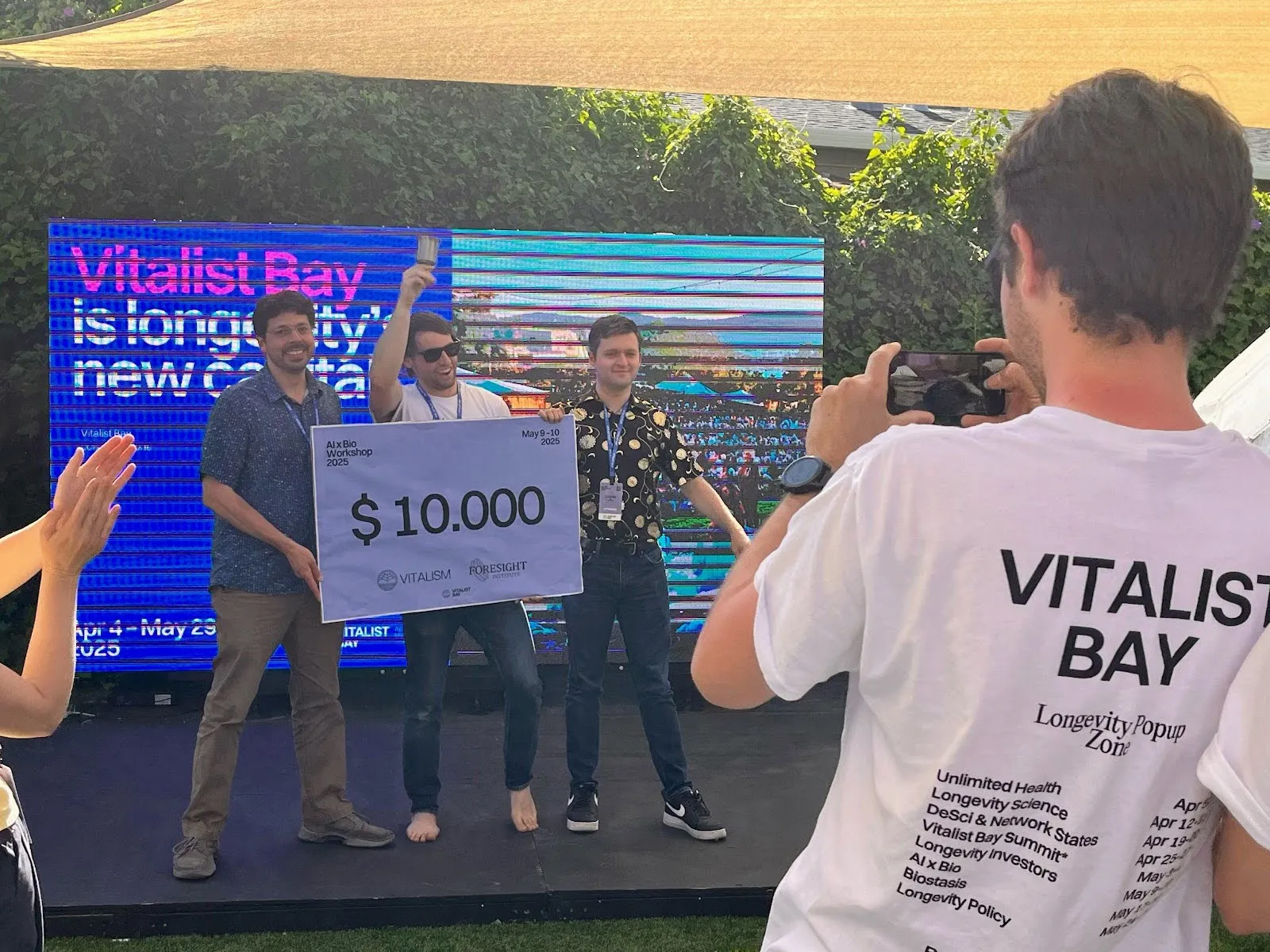
“I know what it’s like to be frail“
On my third day at the summit, a young man introduced himself. He said he had seen me walking around the campus — likely with a look of discombobulation across my face — and was curious to know who I was.
I had noticed him as well, chatting up some of the conference’s most prominent speakers and strumming one of the acoustic guitars lying around the campus for a small crowd of young female conference attendees. He told me his name was Ariv, he was a junior at UCLA — my alma mater — and was taking a sabbatical so he could conclude an internship with Apple. Spurred by sheer curiosity, he had come to Vitalist Bay from his hometown an hour south of Berkeley, convincing both his parents and his 17-year-old brother, who had skipped a day of school, to join him.
An hour later, I was sitting with Ariv’s whole family on a bench next to the campus’s three outdoor ping-pong tables. They were a household of health nuts, they told me, an interest that had developed 10 years prior when Ariv’s father had some health concerns. Fast-forward to today, and their home includes a red-light machine, a hyperbaric oxygen chamber, and myriad other unconventional health trinkets. They also engage regularly in old-school, analog health practices, like meditation, daily walks, and plant-based diets.
“I think people take feeling shitty, physically and mentally, for a normal occurrence,” Ariv said. “And I think our whole family really believes that unwanted physical or mental experiences, like pain and suffering, can be alleviated by really intentional lifestyle decisions.”
And yet, for all the talk of healthy living at Vitalist Bay, the conference’s hyperfocus on futuristic, laboratory-based health and longevity modalities left Ariv’s family feeling slightly alienated. “A lot of people here are drinking alcohol,” said Ariv’s father, who asked that I not use his name. “They’re messing up their own livers, and then they expect a pill to come and take care of that?”
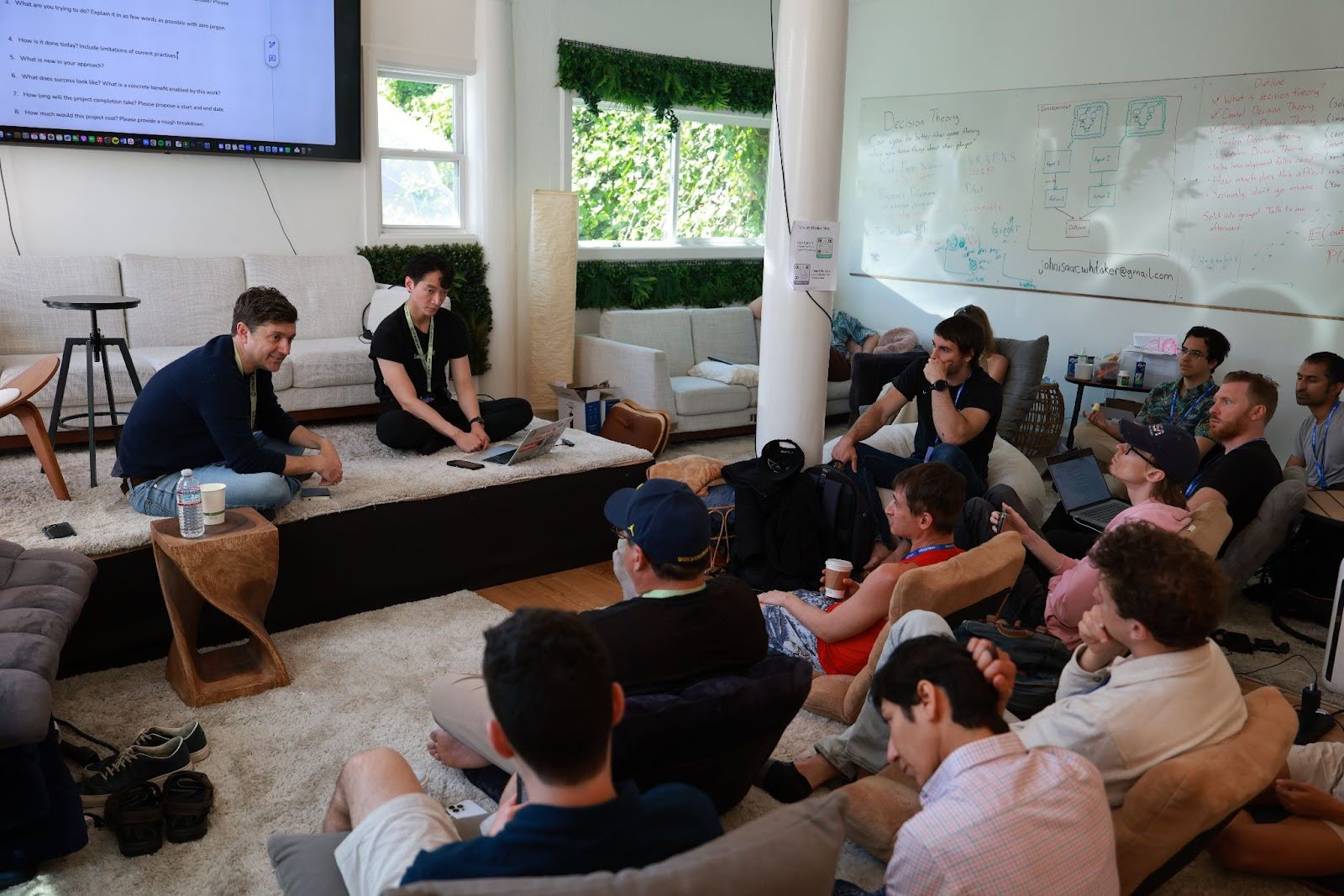
Yet not everyone agreed. Several times during my week at Vitalist Bay, I caught sight of a slim, hoodied, and spectacled young man walking around the Lighthaven grounds entirely barefoot. His name was Laurence Ion, and he had been a staple of these sorts of longevity events for years, slowly becoming one of the movement’s most prominent young spokespersons. He didn’t offer me much about his professional background — he felt his personal saga told a better story: “It’s hard to decouple my interest in longevity from my history growing up with a rare genetic disease, having a lot of surgeries across my childhood, spending a lot of time in hospitals. I know what it’s like to be frail.”
Ion’s recovery from childhood illness sparked a curiosity for the possibilities of biology and medicine. He eventually became convinced that science might be able to cure death altogether. He soon put his computer skills to use by organizing pop-up communities similar to Vitalist Bay around the world, from Montenegro to Honduras, to help globalize the war against aging.
For Ion, staying in a community like Vitalist Bay, where he can walk around barefoot and live surrounded by like-minded peers, is the only way to feel at home in a world still spellbound by a pro-aging trance. “I cannot live with people who want to die,” he said. “The only way for me to live is surrounded by my tribe.”
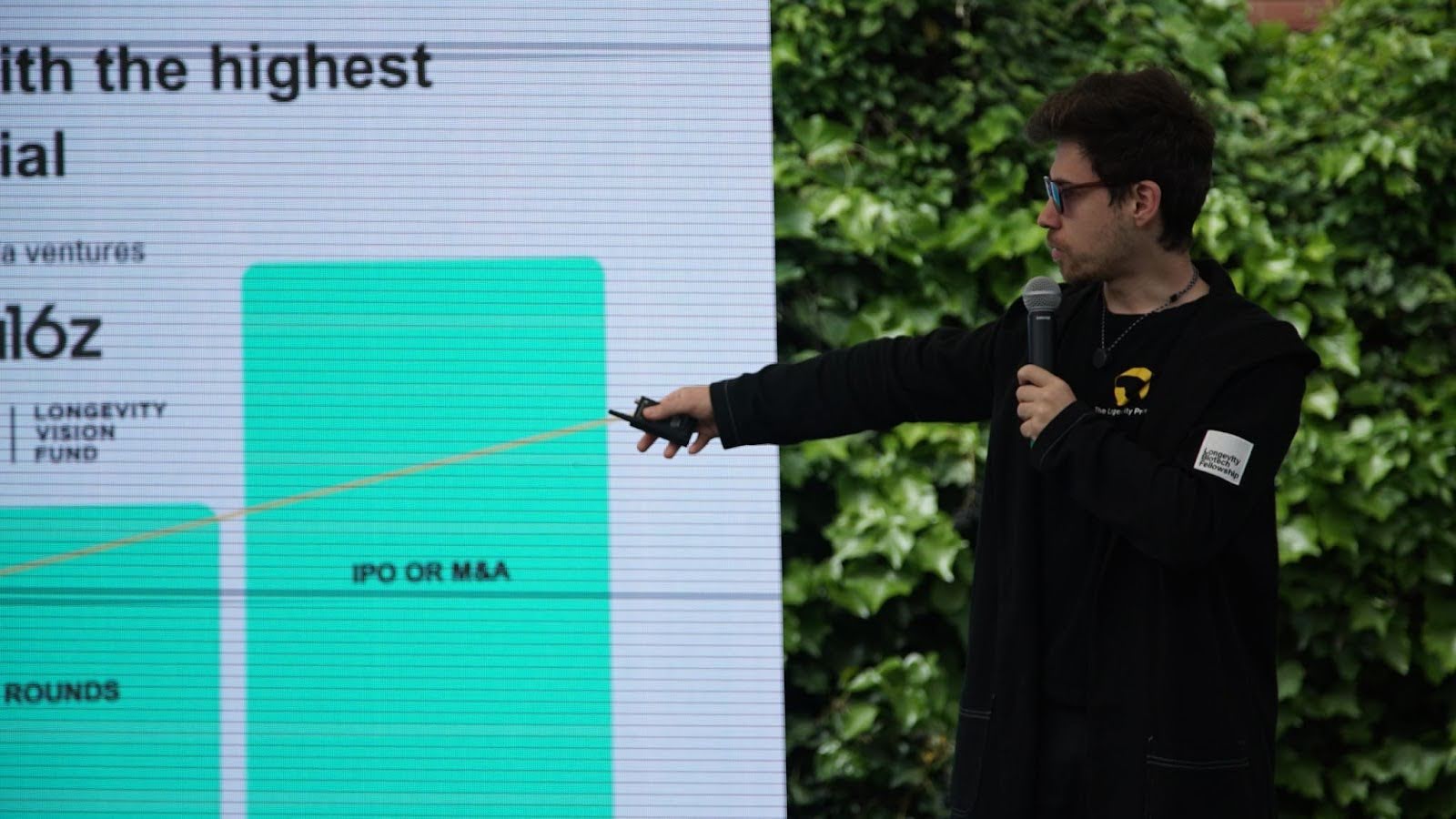
A tribe called longevity
One of the common traits between the world’s blue zones — geographic regions where an outsized portion of the population lives past 100 — is a culture of strong social activity. Beyond diet and exercise, beyond supplements and biohacks, science tells us that it is this kind of human connection — shared spaces and shared relations — that helps us to live healthier and longer lives.
The U.S., home to this makeshift “longevity capital of the world,” is not only not a blue zone — it is a particularly lonely country. According to surveys, more than 1 in 10 American adults say they have no close friends. Almost the same number report being depressed in a given year. The week I was at Vitalist Bay, a team of researchers at Emory University published a survey that found the U.S. is the fifth most socially isolated nation on Earth. Nearly one-third of American households are occupied by a single person, according to the U.S. Census.
“I cannot live with people who want to die. The only way for me to live is surrounded by my tribe.”
Laurence Ion
More than smoking, sedentariness, drinking, or disease, this kind of loneliness cuts years off our lives. The U.S. surgeon general estimates that social isolation increases the risk of premature death by 29%. Imagine if we invested just a fraction of the money going into the billion-dollar startups and seven-figure supplement budgets on display at Vitalist Bay into efforts to bring us closer together during the time we already have on Earth. How many life years would that add to our species? How much utilitarian value do we leave on the table?
From our current vantage point, it’s still impossible to predict whether any of the drugs, medical treatments, or far-out sci-fi scenarios presented at Vitalist Bay will significantly extend our lives. But what we do know is that the kind of community-building I saw on display there, one in which attendees shared their rooms and meals and conversations, will undoubtedly make our lives healthier and happier. Many came to the conference looking for a simple way to extend their lives. And yet, unknowingly, they were swimming in the waters of longevity the whole time.
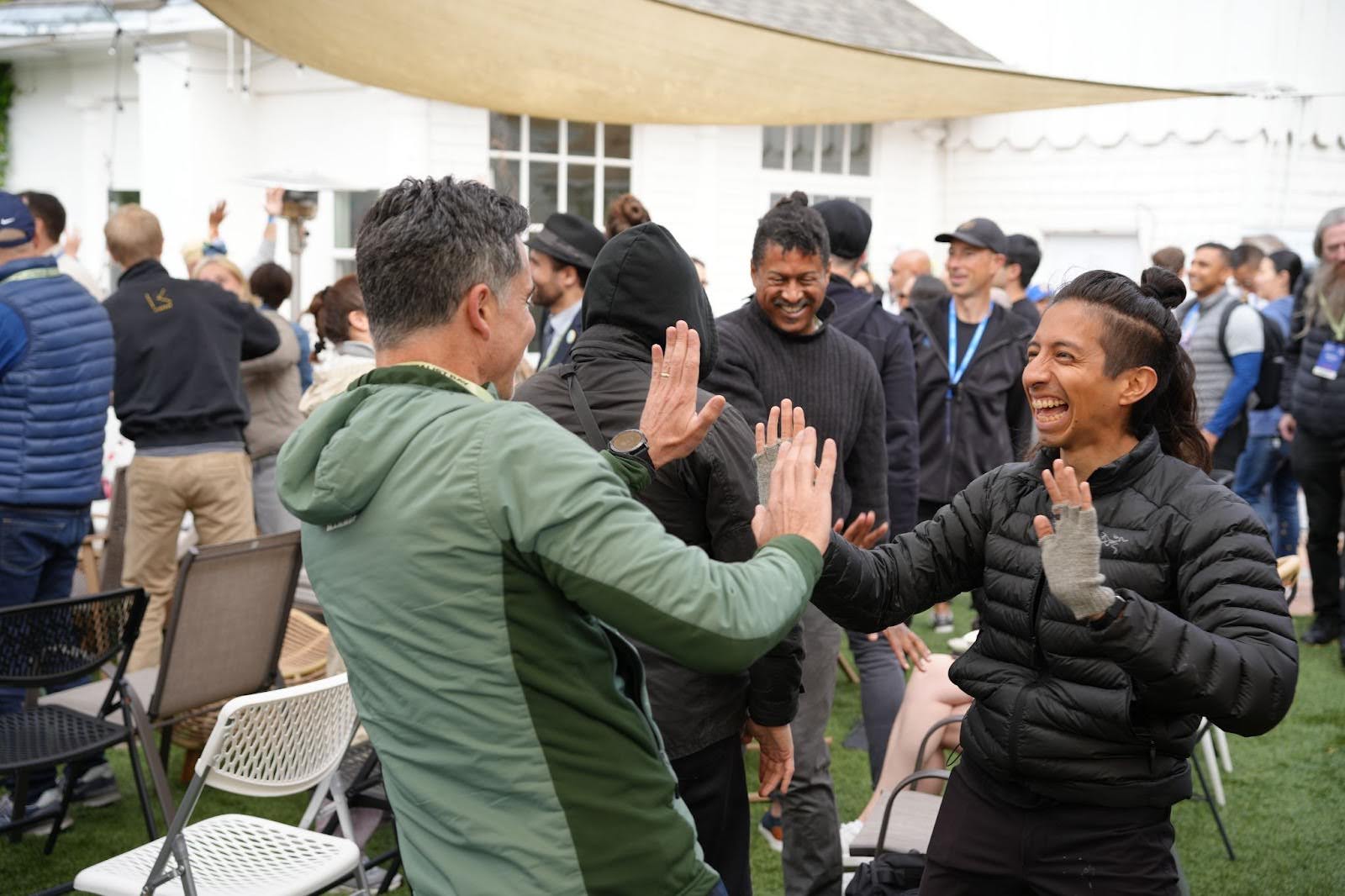
Just before departing the conference, Ariv, the precocious young man who had come to Vitalist Bay with his whole family, said something that stuck with me: “This weekend, we learned a lot about how we could maybe live forever,” he said. “If I get that chance, I would only want to do that with other people — they would also have to want to be around.”
We’d love to hear from you! If you have a comment about this article or if you have a tip for a future Freethink story, please email us at [email protected].
